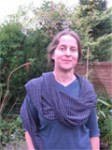Professor of Anthropology and Director of the Center for Visual Anthropology at the University of Southern California, Timothy Asch made several groundbreaking documentaries and was a champion for the use of ethnographic films in the teaching of anthropology. Susanne Hammacher of the Royal Anthropological Institute looks at his life and work.
This profile first appeared in Viewfinder 73
 About the Author: Susanne Hammacher is the Film Officer of the Royal Anthropological Institute. and coordinator of the RAI International Festival of Ethnographic Film since 2002. She read anthropology, economics and history of art at the University of Basel, Switzerland. She worked for over ten years as head of education and public programmes at the Museum der Kulturen in Basel, and as exhibition officer at the Museum of Childhood, V&A, London. She has been conducting fieldwork in Mexico since 1982 on aspects of trading and market systems, gender and migration, textiles (silk production, platting, weaving), community museums and audio-visual indigenous media. She is curating and facilitating various screening and outreach projects in London as well as working on the digitisation of the RAI collection.
About the Author: Susanne Hammacher is the Film Officer of the Royal Anthropological Institute. and coordinator of the RAI International Festival of Ethnographic Film since 2002. She read anthropology, economics and history of art at the University of Basel, Switzerland. She worked for over ten years as head of education and public programmes at the Museum der Kulturen in Basel, and as exhibition officer at the Museum of Childhood, V&A, London. She has been conducting fieldwork in Mexico since 1982 on aspects of trading and market systems, gender and migration, textiles (silk production, platting, weaving), community museums and audio-visual indigenous media. She is curating and facilitating various screening and outreach projects in London as well as working on the digitisation of the RAI collection.
Timothy Asch (1932–1994) began his career in ethnographic film by working 1959–62 as an editor on John Marshall’s South African films at Harvard’s Peabody Museum. He started filming in the middle of the 1960s, just as portable synchronous sound technology for 16 mm production became available. From 1968 Asch produced more than fifty ethnographic films about the Yanomamö Indians of Venezuela, trans- humant herders in Afghanistan, and the Balinese and Rotinese in Indonesia.
Although Asch is probably best known and remembered for his many ethno- graphic films, he spent much of hiscareer teaching and writing and his main aim was to championing the use of ethnographic films in the teaching of anthropology. In addition to writing several articles that dealt specifically with pedagogy and film, Asch promoted and collaborated on the production of study guides to accompany filmic material. He taught at Brandeis, Harvard, New York University, The Australian National University and the University of Southern California, and was instrumental in establishing the Visual Anthropology Master’s Programme.

Timothy Asch,photographed in 1961 (image: Peter Loizos)
During the 1960s and 1970s Asch was involved in the creation of the National Anthropological Film Centre (now Human Studies Film Archive, HSFA) at the Smithsonian Institution, which is dedicated to the preservation of ethnographic research footage and its documentation. He believed that the exposure to media (television, radio, movies, photography etc.) and instant forms of communication in today’s world have created the need for new teaching and learning strategies with more intellectually and emotionally stimulat - ing learning environments. Film could allow students to re-experience the experience of the anthropologist in the field. He always stressed that film was to be used in conjunction, not in lieu of, written material. During the mid 1960s Tim and his wife Patsy, participated in the development of a primary school curriculum called Man, A Course Of Study (MACOS). The role of film in the MACOS course was to present students with actual ethnographic data in form of un-narrated film sequences from which they could formulate questions and hypotheses from their own observations.
The changing political environment in the 1960s and 1970s shifted filmmakers away from a detached observation tothe consideration of the fate of their subjects. Asch’s interest in the ethically responsible use of film developed in tandem with collaborative filmmaking. He was to do his major creative work among the Yanomamö Indians in Venezuela in collaboration with Napoleon Chagnon, and later there were collaborative projects in Afghanistan and Indonesia. The Afghanistan project sharpened his concern with the ethical use of film, when he suddenly found that material he had shot for one purpose had been transmitted in quite a different way by the BBC to make a programme about the Afghan civil war. The involvement of the informants in filming and experiments with the use of the film to elicit ‘informant feedback’ and the recording of the participants’ interpretation of the filmed events became a principle aim of Asch’s Indonesian research. The corpus of Asch’s Indonesia films includes a series of five films made with Linda Connor on the island of Bali, two films made in collaboration with James J. Fox on the island of Roti and a film about the Ata Tana Ai of the eastern Indonesian island of Flores with Douglas Lewis. Instead of attempting to film culture (often scripted by voice-over narration or presenters), Asch’s films on Indonesia identify persons who are seen on screen acting meaningful in various events according to their individual intentions. In the interplay of person and event, the viewer is provided with sufficient information to construct a culture as a theory of persons, actions and events.
Asch’s Indonesia and Afghanistan films are distributed by the RAI: www.therai.org.uk/film For all Yanomamö films see: www.der.org.
Susanne Hammacher